I love the outdoors and nature, and New Mexico’s landscapes always called to me. But White Valley was a surprise. It’s a desert oasis with stunning beauty and wild landscapes. It’s a peaceful place in the heart of New Mexico, perfect for escaping the world.
When I first visited White Valley, I was amazed. The rock formations and blue skies are breathtaking. The lush spots and hidden waterholes show the valley’s strength. It’s a desert that feels alive, where nature and humans can live together.
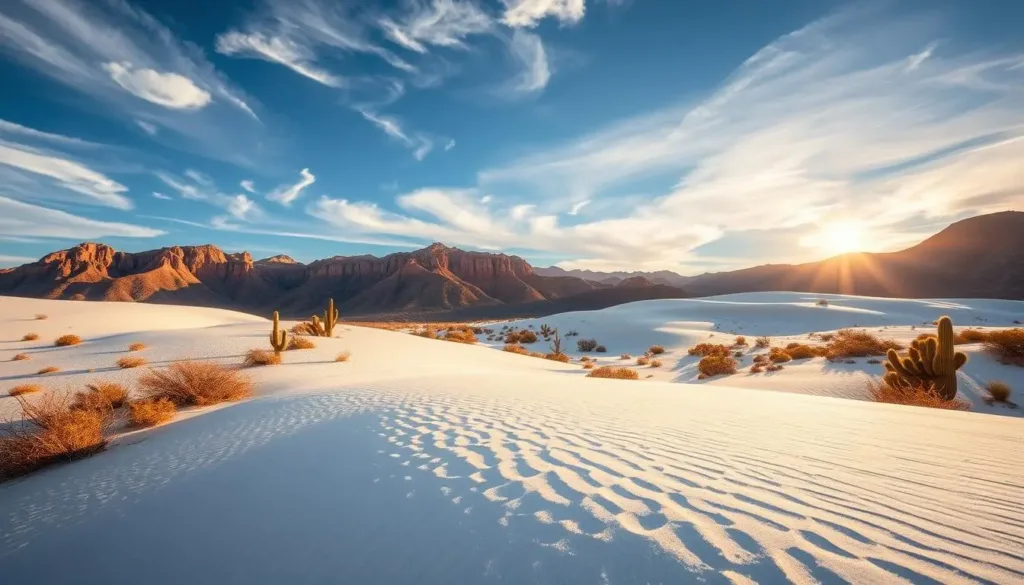
“A vast desert panorama in New Mexico’s White Valley, featuring white sand dunes, rocky cliffs in the distance, strewn cacti, long shadows cast by warm golden sunlight, a bright blue sky with a few wispy clouds, and a peaceful, unspoiled nature”
Key Takeaways
- Discover the hidden gem of White Valley, New Mexico, a desert oasis with a unique and captivating landscape.
- Explore the stark beauty and untamed wilderness of the region, where towering rock formations and pockets of lush vegetation coexist in perfect harmony.
- Immerse yourself in the serene splendor of the desert, escaping the distractions of everyday life and reconnecting with nature.
- Witness the resilience and diversity of the desert landscape, where nature’s power and the human spirit come together in a truly remarkable way.
- Discover the hidden gems and natural wonders that make White Valley a must-visit destination for outdoor enthusiasts and nature lovers.
Finding White Valley, New Mexico’s Undiscovered Treasures
Exploring White Valley in New Mexico is a journey into beauty and peace. The desert’s vast views, rocky formations, and the Tularosa Basin create a stunning scene.
First Impressions of the Desert Landscape
Stepping into the valley of dreams, I see a world of contrasts. The white sands meet the earthy rocks. The Ah-Shi-Sle-Pah Wilderness calls out with its unique hoodoos and canyons.
Location and Access Points
Near White Sands National Park, in the center of New Mexico, is White Valley. There are numerous entry points and pathways to explore, making transportation simple.
Best Times to Visit
- Spring and fall are the best times for a visit, with comfortable weather.
- Summer is hot, so visit early morning or evening.
- Winter turns the valley into a winter wonderland.
White Valley New Mexico is a hidden gem for peace or adventure. Its beauty and exploration opportunities make it unforgettable.
The Geological Wonders of White Valley’s Rock Formations
The desert landscape of White Valley in New Mexico is a true marvel. It was shaped by nature’s forces over thousands of years. At its heart are the famous hoodoos and rock formations, made from the vibrant sandstone that makes the area unique.
White Valley is known for its stunning hoodoos, just like the Kasha-Katuwe Tent Rocks National Monument nearby. Both places have the same amazing hoodoo formations. These sandstone spires show the area’s dynamic geological past.
- White Valley’s hoodoos were sculpted by weathering and erosion. Time, wind, and water carved the fragile sandstone.
- The rock formations in the valley are the result of natural processes, volcanic eruptions, and tectonic action. Over millennia, these forces have molded the terrain.
- Tourists have the opportunity to tour the Kasha-Katuwe Tent Rocks National Monument. Similar natural treasures can be seen in this neighboring protected area. The opportunity to visit and contrast these two great locations is provided.
The hoodoos and rock formations in White Valley amaze and inspire visitors. They are drawn to the valley’s raw beauty and the earth’s geological stories.
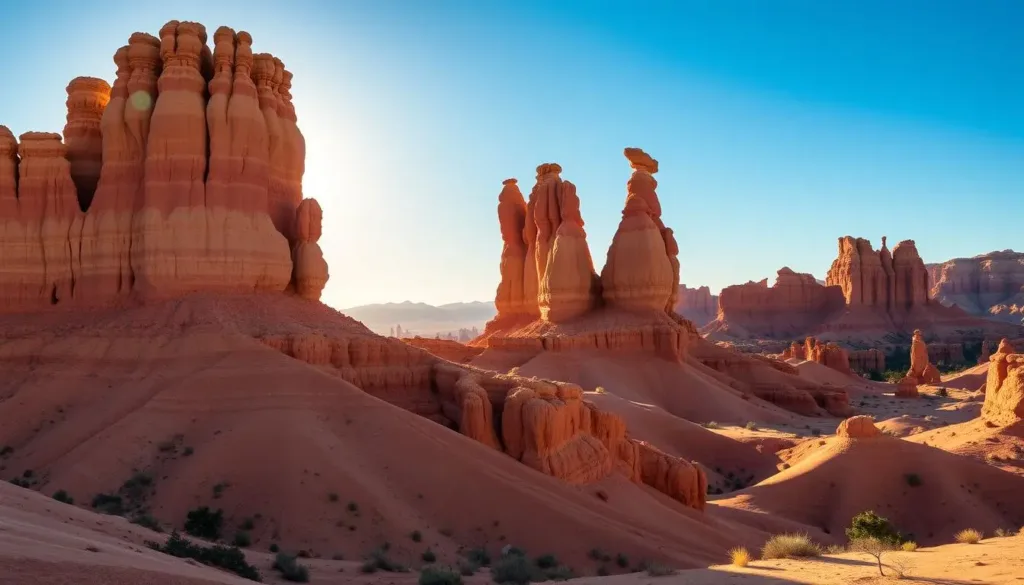
“Majestic hoodoos towering over a sunlit desert landscape, with intricate rock formations and vibrant colors reflecting the golden hour, surrounded by a clear blue sky and sparse desert vegetation.”
“The sheer scale and detail of the hoodoos and rock formations in White Valley are awe-inspiring. It shows nature’s power and reminds us of our place in the world.”
Exploring the Famous Yaleleho Hoodoos
In White Valley, New Mexico, the Yaleleho hoodoos are a sight to behold. These broyac g yaleleho hoodoos, or white rock formations, amaze everyone with their unique shapes and details.
Formation and History
The hoodoos were shaped over millions of years. Wind, water, and time turned an ancient seabed into these stunning formations. Learning about their history is like uncovering a geological treasure.
Photography Tips
- Capture the hoodoos at different times of day to see the changing shadows and lighting effects.
- Use a wide-angle lens to highlight the scale and grandeur of the formations.
- Experiment with long exposures to create a sense of movement and fluidity in your images.
- Consider including human elements, such as hikers or wildlife, to provide a sense of scale and perspective.
Trail Difficulty Levels
The trail through the Yaleleho hoodoos has something for everyone. The main trail is moderately challenging, with some scrambling and uneven terrain. For a tougher adventure, try the secondary trails that explore more rugged areas. Always check a map before you go to pick the right path for you.
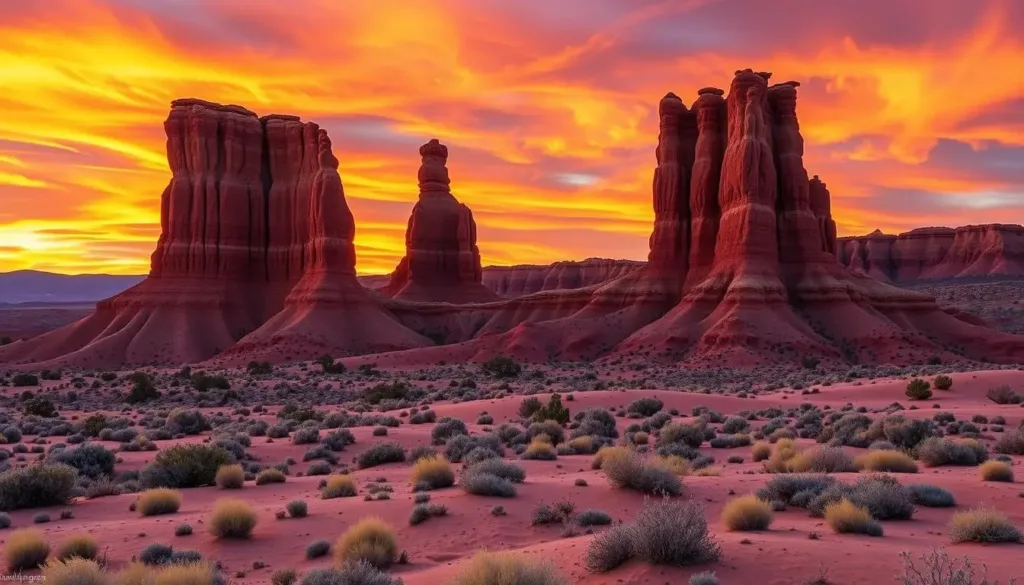
“Distant sagebrush and sandy terrain, towering rock formations amid a breathtaking desert landscape, vivid orange and purple sky, dramatic hoodoo shadows, and the serene ambiance of White Valley, New Mexico are all features of the magnificent Yaleleho Hoodoos at sunset.”
“The Yaleleho hoodoos are a true natural wonder, a captivating blend of geological history and breathtaking beauty.”
Native Flora and Wildlife in the Valley
White Valley, New Mexico, is a desert wonderland. It’s home to many native plants and animals. These species have learned to live well in this tough environment. The valley’s beauty shows how life can thrive even in harsh conditions.
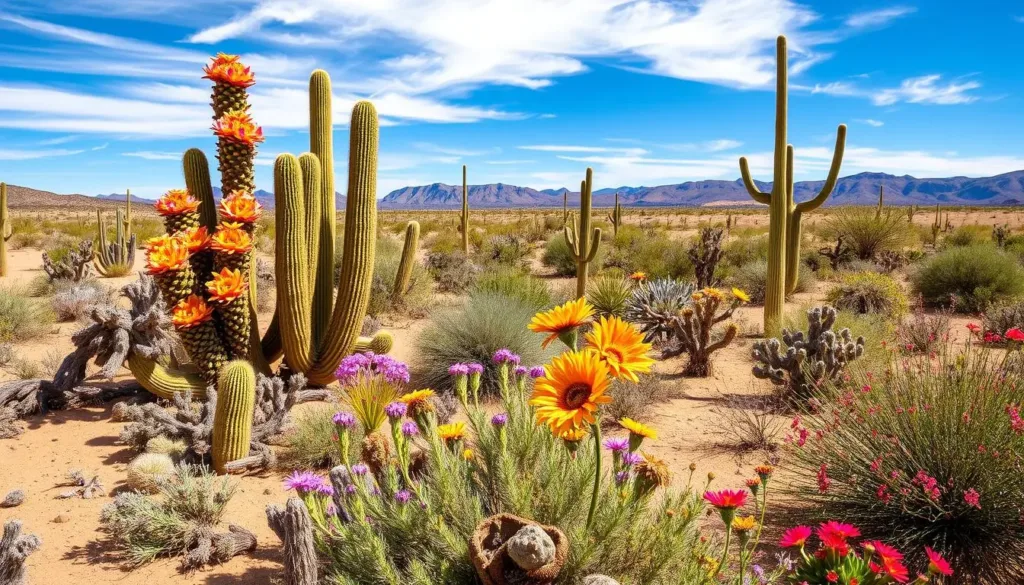
The wildlife in White Valley is just as amazing. You can find mammals, birds, and reptiles here. Look out for the fast pronghorn antelope and the quick coyote. Birds like the red-tailed hawk and the western meadowlark add to the valley’s beauty.
It’s very important to protect this desert. Conservation efforts are working hard to keep the valley’s plants and animals safe. By being careful and respectful, we can help preserve this special place for the future.
| Native Plants | Native Animals |
|---|---|
| Prickly Pear Cactus | Pronghorn Antelope |
| Desert Lilies | Coyote |
| Juniper Trees | Red-tailed Hawk |
| Piñon Pine Trees | Western Meadowlark |
Adventures Through the Valley’s Slot Canyons
Get ready for an exciting adventure in White Valley, New Mexico. The slot canyons here are narrow and winding. They offer a thrilling experience for those who love the outdoors and want to see nature’s beauty up close.
Safety Guidelines
Exploring slot canyons needs careful planning and safety awareness. Before you start, make sure you know these safety tips:
- Check the weather and avoid going during flash flood warnings
- Wear shoes with a good grip to prevent slipping
- Bring lots of water and snacks to stay hydrated and energized
- Have a first aid kit on hand in case of small wounds.
- Tell someone your route and when you’ll be back
Popular Canyon Routes
Slot canyon routes abound in the White Valley. Every one offers distinct advantages and challenges. Some of the most well-known ones are included here.:
- The Narrows: A classic canyon with tall walls and amazing rock formations
- Peekaboo Canyon: A technical route with rappels and tight spots
- Spooky Gulch: A calm canyon known for its interesting shapes and textures
Equipment Needed
To enjoy your slot canyon adventure, you’ll need the right gear. Here’s what to bring:
- Sturdy, water-resistant hiking boots
- Lightweight, quick-drying clothes
- A headlamp or flashlight for dark spots
- Rope and harness for technical parts
- A smartphone or camera to take pictures
With the right preparation and gear, your adventure in White Valley’s slot canyons will be unforgettable. Embrace the journey and discover the beauty of this desert paradise.
White Valley’s Connection to White Sands National Park
Near White Sands National Park, in the center of New Mexico, is White Valley. They have a strong bond because of their gypsum dune farms. These fields extend well outside of the park and into the adjacent landscape.
The gypsum dunes in White Sands National Park come from an ancient sea. This sea covered the area millions of years ago. When it dried up, it left behind huge gypsum deposits, the biggest dune field in the world.
The dunes in White Valley show the same history. They are a sign of the region’s shared past.
White Valley is also a key area for plants and animals. It acts as a buffer and transition zone for the White Sands ecosystem. Many species found in the park live in the valleys too. This creates a natural tapestry that shows how these desert areas are connected.
| Characteristic | White Sands National Park | White Valley |
|---|---|---|
| Gypsum Dune Field | Largest in the world | Extends beyond park boundaries |
| Ecological Significance | Home to unique desert species | Serves as a buffer and transition zone |
| Geological Origin | Formed from ancient Permian Sea | Shares the same geological history |
Learning about White Valley and White Sands National Park’s connection helps visitors appreciate this amazing area. From the vast gypsum dunes to the diverse ecosystems, it’s a must-see for nature lovers and adventurers.
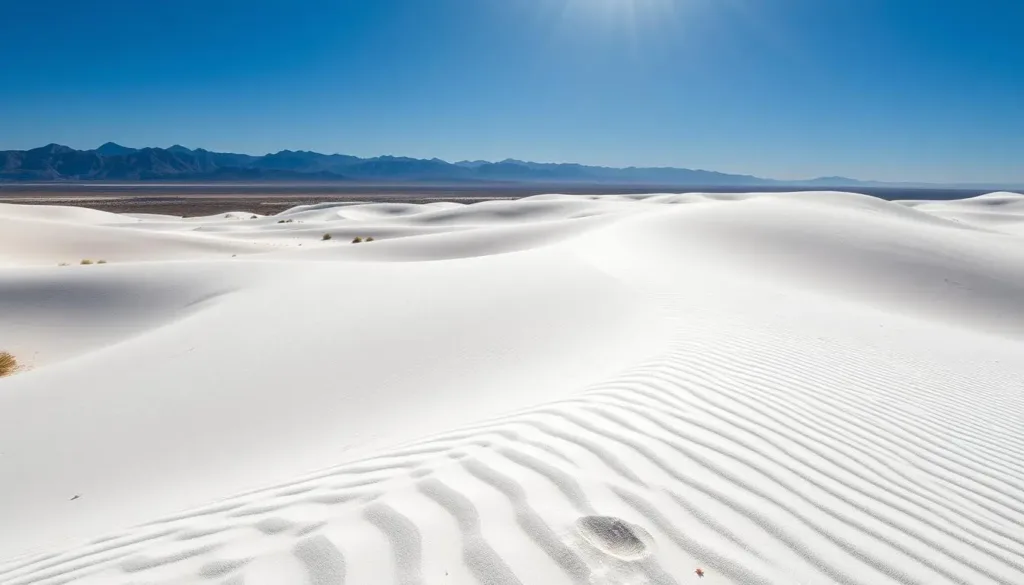
A sweeping view of the stunning white sand dunes of White Sands National Park, with sunlit ripples and shadows creating intricate patterns, surrounded by a clear blue sky and distant rugged mountains in the background. Lush desert vegetation peeks through the sands, showcasing the contrast between the bright whites and earthy tones of the landscape. The scene evokes a sense of serenity and untouched beauty in a hidden desert paradise.
Hidden Photography Spots and Sunset Views
White Valley, New Mexico, is a dream spot for photographers. It has many hidden spots and stunning sunset views. Whether you’re experienced or just starting, this desert offers a memorable photo adventure.
Prime Photography Locations
Explore the valley’s glistening white rocks, canyons, and secret pools. Each place is perfect for your photos. Don’t miss the Yaleleho Hoodoos, a place that looks like another world.
- The Painted Desert Overlook
- The Slot Canyon Trail
- The Hidden Oasis
Optimal Lighting Conditions
Plan your visit for the dappled sunlight that lights up the landscape. The greatest times of day are sunrise and sunset. They portray the White Valley’s splendor in the most breathtaking manner.
Seasonal Photography Guide
White Valley changes with the seasons. Spring brings alive the desert plants against the rough terrain. Summer’s light and shadow are dramatic. Autumn’s colors are warm and inviting.
A breathtaking panoramic view of a hidden desert paradise in White Valley, New Mexico, capturing the vibrant hues of a sunset reflecting off rocky cliffs and vast sandy dunes, dotted with sparse desert vegetation under a colorful sky filled with dramatic clouds.
Let your creativity shine in White Valley, New Mexico. Every photo can show a new and exciting view.
Planning Your Visit: Essential Tips and Information
Planning a trip to White Valley in New Mexico is exciting. Start by visiting the visitor center. There, you can find out about the best routes and attractions. The staff can help with tips for driving, biking, or hiking.
The drive to White Valley is an adventure. You’ll see stunning desert views and maybe some wildlife. For a thrilling ride, try biking the winding roads to find hidden spots.
When planning, look into places to stay and things to do nearby. White Valley has cozy B&Bs and campsites. Also, check out White Sands National Park for more natural beauty.



